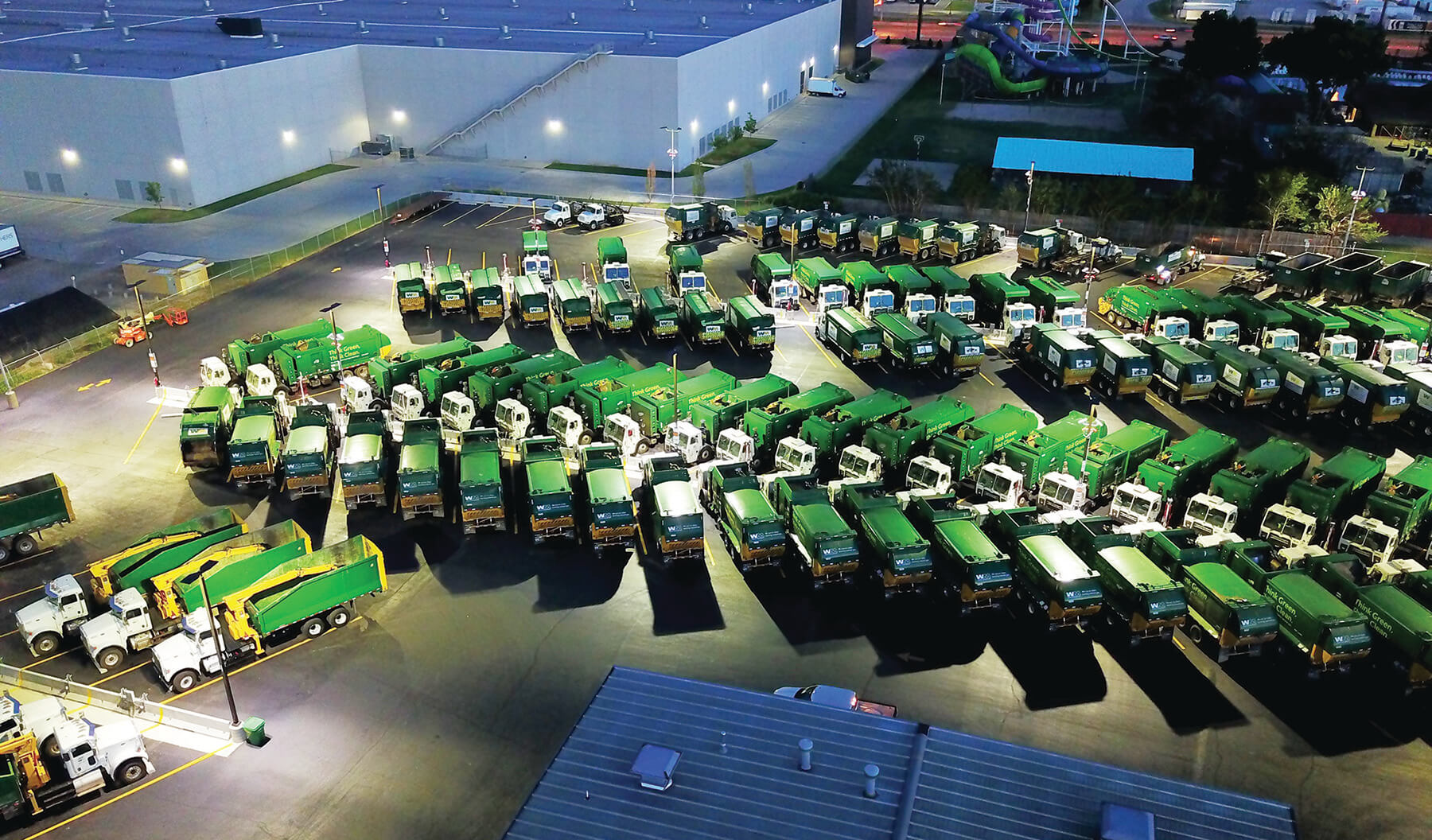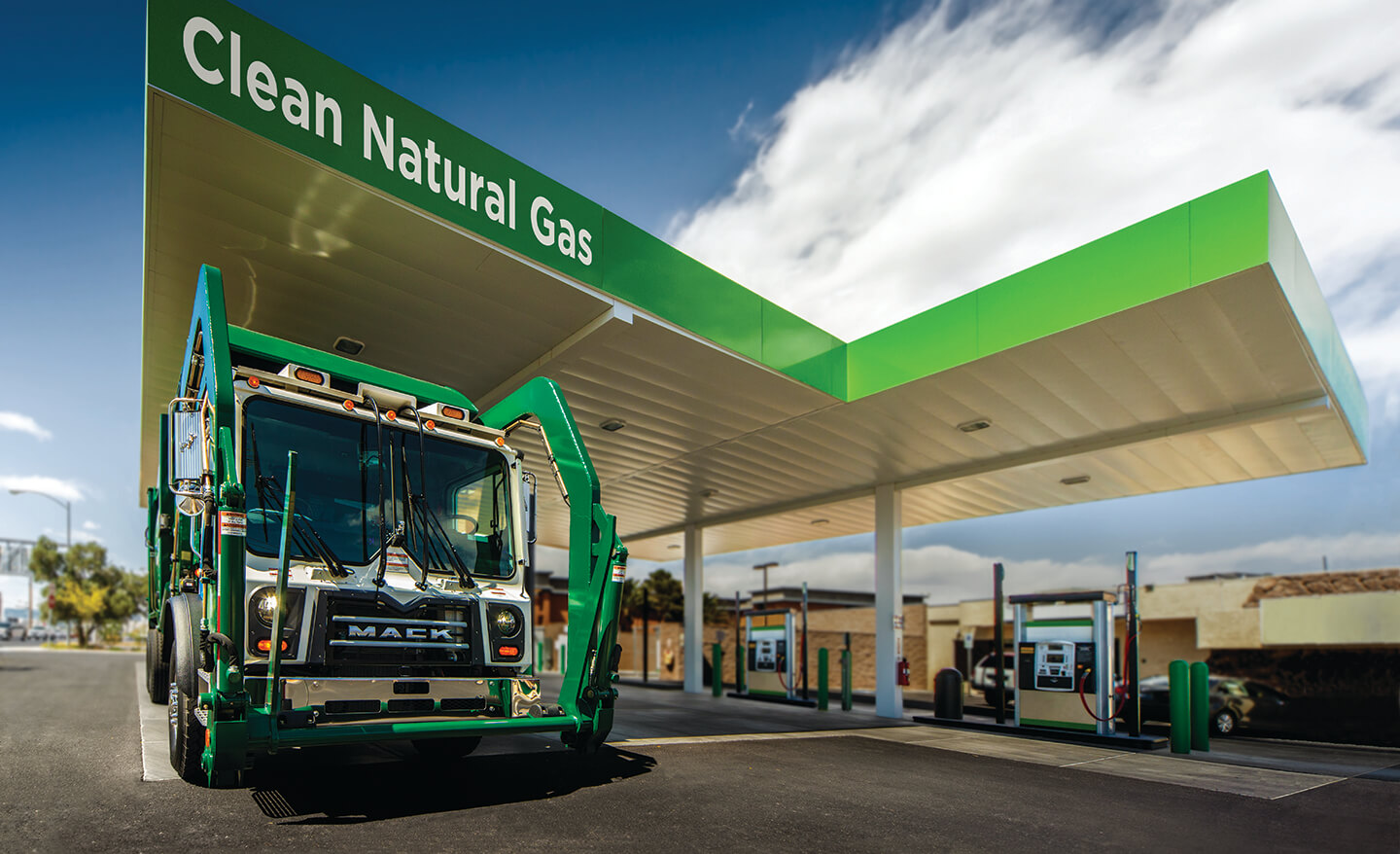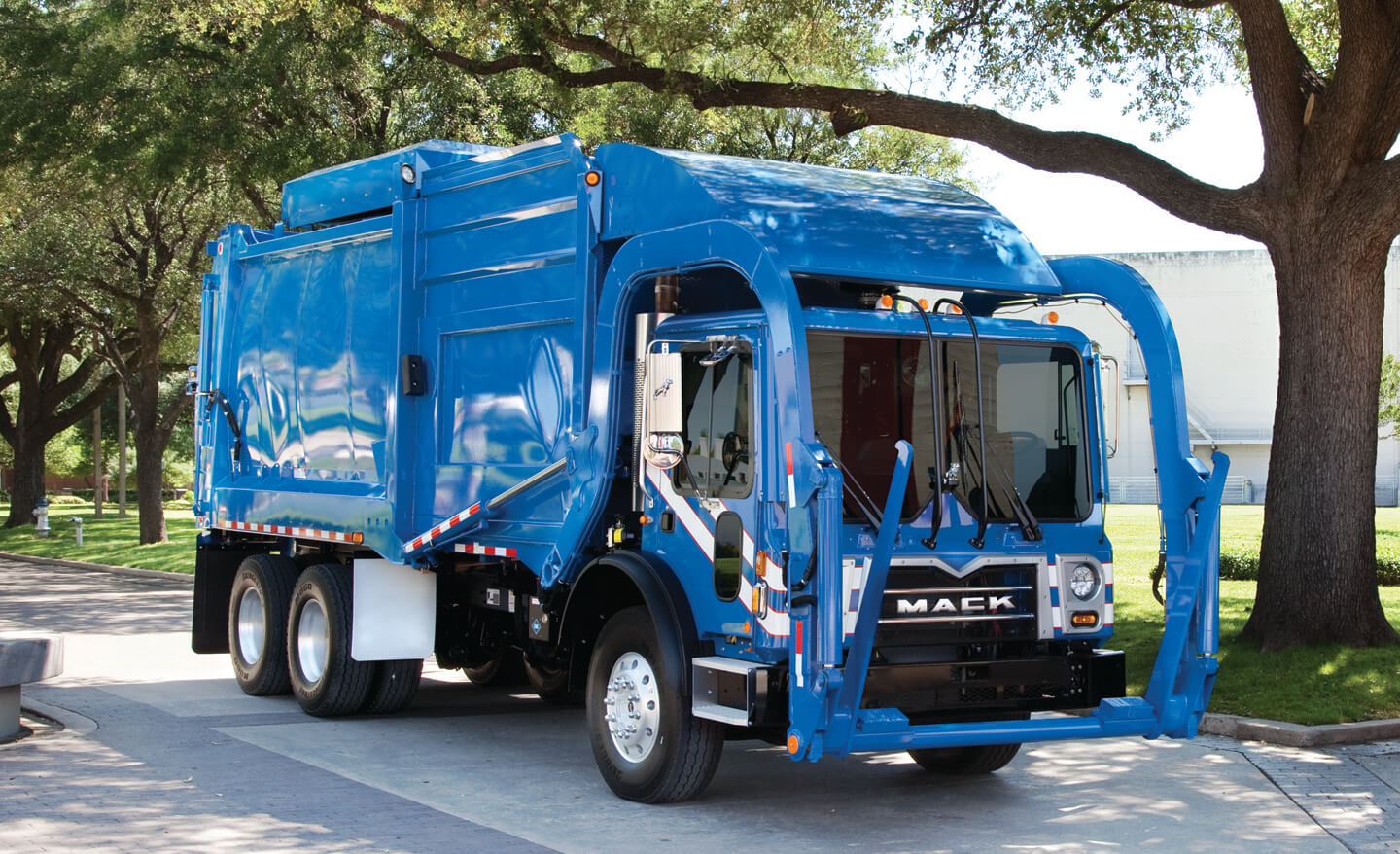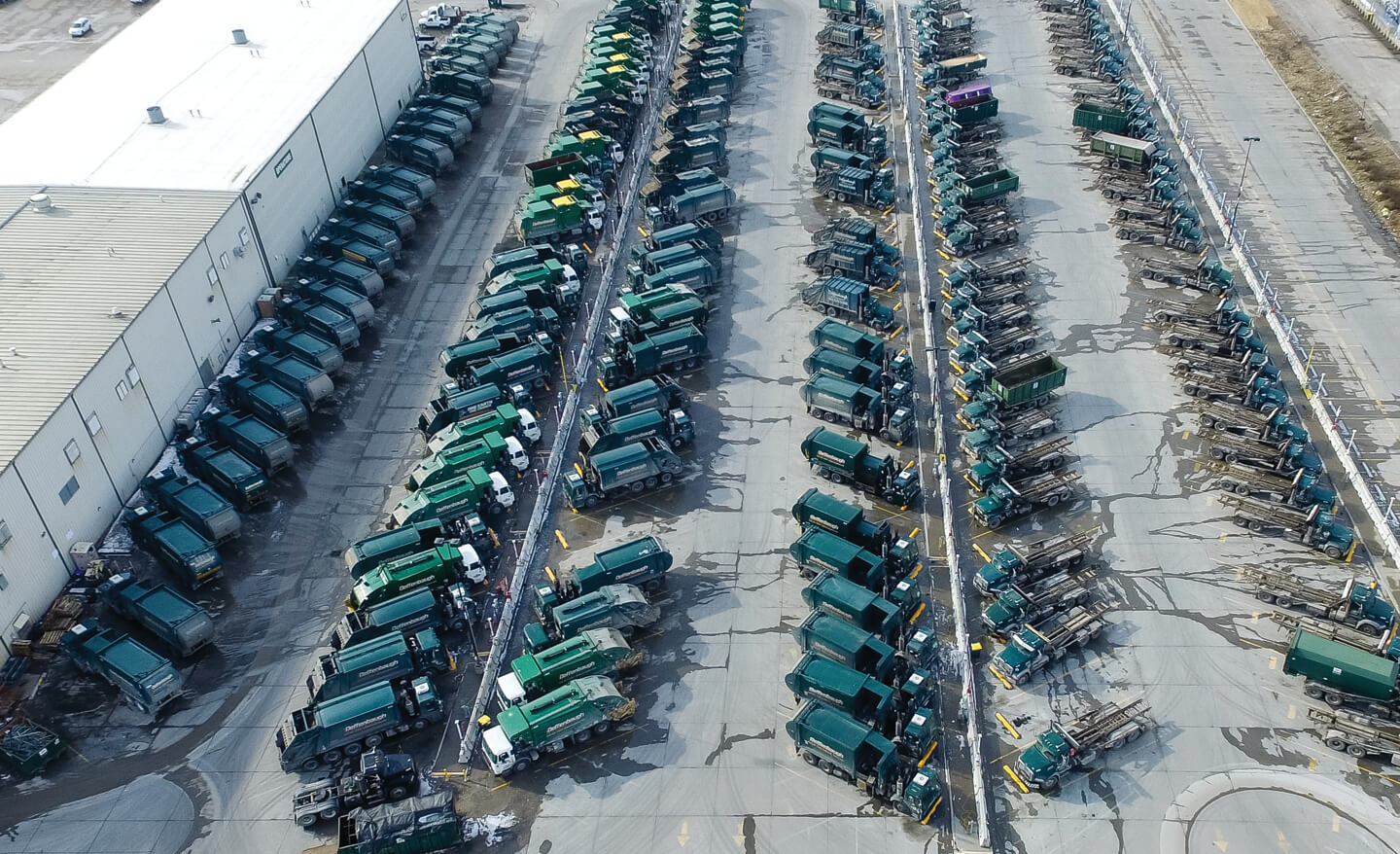Over 17,000 refuse trucks run on natural gas
From the largest refuse company in the United States to some of smallest independent operators, refuse companies are increasingly investing in natural gas vehicles. Today, over 17,000 natural gas refuse and recycling trucks operate across the country, and about 60 percent of new collection trucks on order are powered by natural gas.
Community impact
Refuse companies are not the only ones enjoying the benefits of natural gas refuse and recycling trucks. Communities across the country are experiencing less offensive exhaust fumes and diesel smoke, and on average natural gas engines run 10 decibels quieter than their comparable diesel counterparts.



Waste Management leads the way
WM operates nearly 12,000 heavy-duty natural gas trucks. To power these vehicles, WM has constructed nearly 200 natural gas stations, many of which are publicly accessible. And more and more of these dispensing facilities are fueled by 100% RNG sourced from the very landfills WM operates and maintains. Imagine the refuse truck servicing your neighborhood fueled by the very trash it collects and manages… a truly closed loop in today’s circular economy.
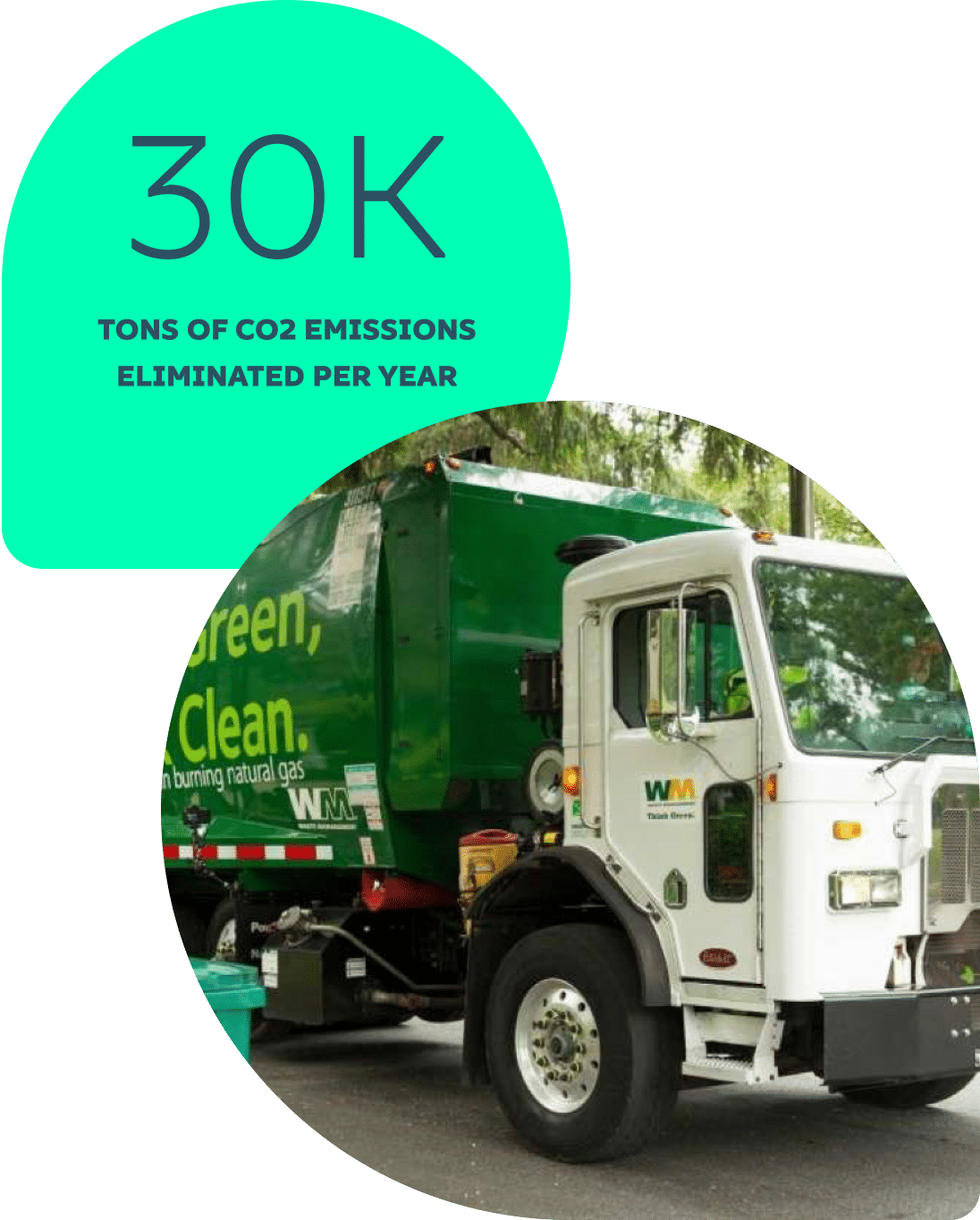

Renewable natural gas
Refuse companies are exploring the possibility of using renewable natural gas produced from captured methane at the landfills they operate. These projects dramatically reduce the environmental impact of waste collection operations and promise the opportunity to create a closed-loop system: refuse trucks powered by the waste they collect.
The Altamont project
In California, Waste Management and Linde North America’s Altamont Landfill near Livermore is producing natural gas that is being used to power its refuse trucks. The Altamont project, which includes the world’s largest landfill natural gas plant, opened in November 2009, following almost 10 years of research. By July 2010, the plant was producing 1.7 million gallons of fuel. The plant is designed to produce 13,000 gallons of liquefied natural gas (LNG) per day at capacity, which is enough fuel to power 300 heavy-duty refuse trucks.
The project is expected to eliminate nearly 30,000 tons of carbon dioxide emissions annually.
Need a natural gas station on your route?
If use of existing fueling infrastructure is not practical, convenient, or economical, it may be better to build a new CNG, LNG, or LCNG station. NGVA can connect you with member station builders across North America.
NGVA can connect you with member station builders across North America.
Find
BUY NGV
A wide array of Natural Gas Vehicle options are commercially available
Vehicles news

